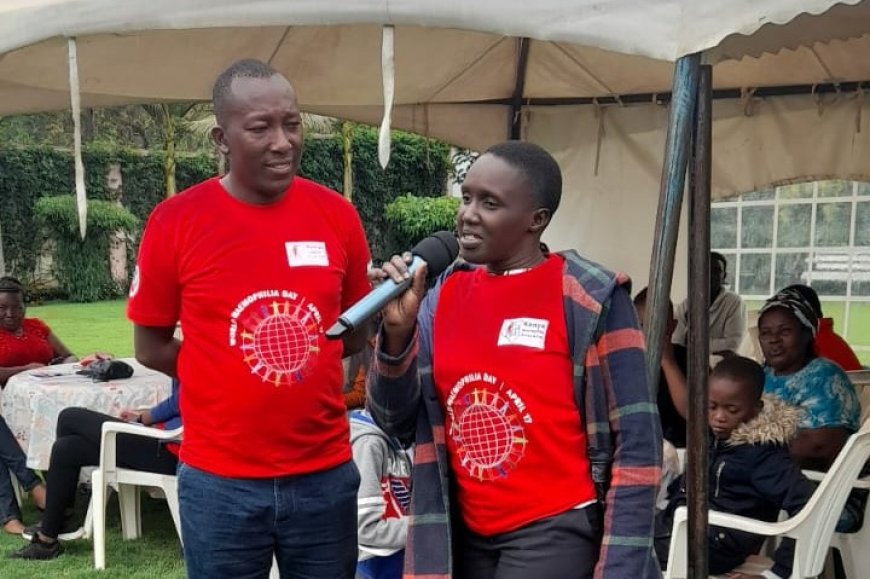Haemophilia patients mark World Haemophilia Day

Thika, Tuesday, April, 18, 2023
K.N.A By Hellen Lunalo
Patients with Haemophilia, a rare genetic condition where a person’s blood does not clot normally because of insufficient levels of certain clotting factors that control bleeding marked the day to highlight their conditions Monday.
People with Haemophilia may bleed for prolonged periods of time after an injury for example from a fall or an impact injury and the bleeding may occur inside the body.
The symptoms of the disorder include bleeding into the joints causing swelling, pain and tightness which affects the knees, elbows and ankles, prolonged bleeding from the gums after dental procedures, blood in the urine or stool and frequent nosebleeds that are hard to stop.
According to statistics by the Kenya Haemophilia Association (KHA), the total number of diagnosed and treated Haemophilia patients stands at 936, with an estimated total of 5,000.
As the world celebrated World Haemophilia Day, with the theme being “Access for all; Prevention of bleeds as the global standard of care”, the KHA Central region chapter celebrated the day in a forum bringing together people affected by Haemophilia in the region.
Speaking to KNA, Christopher Koisikir a fourth-year Bachelor of Commerce Finance Option student at JKUAT University in Juja said he was indebted to KHA for the support he had received as a young adult living with Haemophilia.
“Before diagnosis, I suffered a lot. I started showing symptoms of Haemophilia when I was two years old. I wasn’t able to play like the other children because I would get injured quickly, then bleeding would follow resulting in frequent hospitalization. At the time, I would only receive blood transfusions then I would be discharged after spending days in hospital.”
“Eventually one doctor sent me to Kenyatta National Hospital for Haemophilia testing at the age of 14 as it was the only facility offering the service at the time. There I was diagnosed with Haemophilia type A and the clotting factors were administered for the first time. I was now able to go to school and finish my KCPE exam, go on to join high school and I am now in university, although it wasn’t easy at all. Around the time I was diagnosed is when I was introduced to KHA where I met other people living with the condition just like me, which greatly encouraged me to live normally and pursue my education.” He said
Currently in Kenya two major types of the disorder are most prevalent including, Haemophilia A and Haemophilia B.
Haemophilia patients in Kenya face a number of challenges that people in developed countries do not, such as access to quick and accurate diagnosis, sustained availability of clotting factors, absence of disease awareness and education, high cost of treatment and scarcity of treatment facilities.
The celebrations were held to mark the milestones that the Haemophilia community has made over the years. KHA together with stakeholders have managed to establish and upgrade Haemophilia care clinics in 14 hospitals countrywide and 12 Haemophilia Sickle Cell care centres in County referral hospitals, said James Kago, the KHA Board treasurer.
“This year we intend to increase advocacy of the disorder to the public and affiliate ourselves with the government both National and County so that funds can be allocated, which will be used to facilitate treatment for patients countrywide. We urge the government to devise policies geared towards improving the care and quality of lives of Haemophilia patients,” he maintained.
Courtesy K.N.A
What's Your Reaction?



































































































































































































































































































